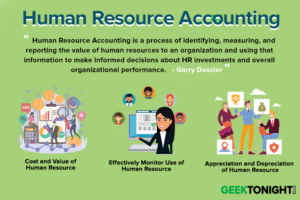What is Employee Assistance Program?
An employee assistance program (EAP) is an arrangement between a corporation, academic institution or government agency and its employees that provide a variety of support programs for the employees.
Although EAPs are aimed at mainly at work-related difficulties, they can also help employees with problems that originate outside the workplace when such troubles impact work attendance or on the-job performance.
Table of Content
The concept of the EAP originated in the 1970s in an effort to reduce substance abuse and intoxication in the workplace. Since that time, EAPs have evolved to deal with a variety of issues such as marital problems, depression, anger management, anxiety and physical illness.
Employee Assistance Program (EAP) aims provides meaningful responses to their individual employee needs, and to meet the code of conduct, ethics and vision of the employee and employer, as well as to increase productivity.
Substance Abuse
Substance abuse, also known as drug abuse, is a patterned use of a substance (drug) in which the user consumes the substance in amounts or with methods neither approved nor supervised by medical professionals. Substance abuse/drug abuse is not limited to mood-altering or psycho-active drugs. If an activity is performed using the objects against the rules and policies of the matter (as in steroids for performance enhancement in sports), it is also called substance abuse.
Reports of the prevalence of alcohol and drugs abuse and the problems they create are commonplace. Substance abuse has a powerful impact on modern society and on business and industry. It has been estimated that companies lose a lot of money per year for every employee who abuses alcohol or drugs.
In USA The drug–free workplace act of 1988 promotes drug–free awareness programs among federal contractors and grant receivers and this include informing employees about the availability of drug counselling, rehabilitation, and employee assistance programs.
Mental Health
Mental health is more than the absence of mental illness. It includes having a positive mental and emotional attitude based in reality. Mental illnesses are real diseases but they can be successfully treated.
In India it is estimated that more than 5 percent of adults have a mental illness that substantially interferes with one or more major life activities, including eating, sleeping, managing money, and functioning in social, family, work and educational settings.
The emotional and mental health issues commonly seen by counsellors in industry are the following:
- Individual adjustment problems (neurosis to psychosis)
- External factors such as battering, incest, rape, or crime
- Sexual problems, including impotence
- Divorce and marital problems
- Depression and suicide attempts
- Difficulties with family or children
- Legal and financial problems
Employee Wellness and Health Promotion Programs
An employee wellness program-sometimes known as a health promotion program is a type of employee benefit that encompasses the various efforts companies make to promote and maintain their employees’ health. Offering health promotion programs to employees provides small businesses with a number of potential benefits.
For example, they may decrease their health care costs, increase worker productivity, reduce absenteeism, and encourage employee loyalty. In addition to improving their general health, work-based health promotion programs also make employees feel that the company is concerned about their welfare, which tends to increase their job satisfaction.
Introducing a health promotion program can be an extremely daunting undertaking because its success usually requires meaningful changes in attitudes and behaviours. Since people do not easily change their habits without good reason, a successful health promotion program should include some sort of incentive.
Incentives may take the form of desirable rewards or undesirable consequences. For the most part, employers implementing health promotion programs find the use of desirable incentives more conducive to establishing a program that projects a positive image.
The ten dimensions of worksite wellness programs are as follows:
- Establishing program policy
- Assessing the health status of the work force
- Linking the work site with service providers,
- Linking individual employees with services appropriate to their needs
- Providing options for behavior change strategies and interventions
- Engaging employees in these various interventions,
- Organizing work-site wide activities to support health improvement,
- Reviewing and altering organizational policies to make the work environment more supportive of health,
- Routinely evaluating program process and changes in health risks,
- Periodically assessing longer-term program results
The four common components of health promotion program are exercise and fitness, smoking cessation, nutrition and weight control, and control of hypertension.
Exercise and Fitness Interventions
Corporate exercise and fitness programs are among the most popular employee well-being interventions. Companies of all shapes and sizes are striving to make physical fitness part of their employees’ lives. Aside from the proven health benefits of exercise, physically fit employees can also handle physical work tasks better, deal with stressful situations more effectively, and tend to be less susceptible to illness and injuries.
Companies are discovering the positive benefits of providing workplace fitness programs. They’re realizing that the tremendous financial costs associated with employee health problems can be drastically cut by proactively investing in appropriately designed corporate fitness programs.
Statistics show that companies with corporate fitness programs enjoy: Reduced Health Care Costs, Increased Productivity, Reduced Absenteeism, decreased recruitment and retraining costs, improved employee concentration, mental alertness and creativity, improved physical and emotional health, leading to better employee morale.
The benefit from the employee’s standpoint is improved health and energy levels, decreased body fat, and a more youthful, fit body.
Corporate fitness programs are an inexpensive way to boost productivity, lower healthcare cost, and increase morale, while keeping employees happy.
- Employees get in better shape
- Reduce Stress
- Increase morale and camaraderie
- Improve teamwork and internal communication
- Boost productivity
- Lower healthcare costs
- Increase employee retention rates
- Create a “fun working environment”
- Reduce absenteeism
Smoking Cessation
Smoking is one of the most exposed health risks in society and the workplace. It has been fully demonstrated that smoking is linked to a greater frequency of coronary heart disease, stroke, cancer, and emphysema.
In order to help employees and to provide a safer working environment organizations have initiated an increase in the conduct of smoking cessation programs. There are different ways in which organizations can support smoking cessation programs like in–house programs part of EAP, stress management or wellness programs or through an external counsellor.
Nutrition and Weight control interventions
The Health and wellbeing of an employee is of utmost importance to an organization. Health problems such as hypertension high levels of blood sugar and cholesterol are common health problems of employees.
An organization may conduct several programs such as newsletters, advice on weightless programs as well as providing health and nutritional food in there cafeteria. The organization may also employ a health trainer for the benefit of its employee’s.
Control of Hypertension
Hypertension means “High blood pressure; transitory or sustained elevation of systemic arterial blood pressure to a level likely to induce cardiovascular damage or other adverse consequences.”
Hypertension causes a significantly greater incidence of heart disease and stroke. Hypertension can be controlled through exercise, weight loss, Meditation, stress reduction, a low–salt diet.
A typical screening and control program may include:
- Provision of educational materials
- Blood pressure screenings to identify hypertensive employees
- Referral of such employees for treatment
- Installation of blood pressure screening equipment for employees to use to monitor their own blood pressure.
- Low salt foods available in both cafeteria and vending machines
- Periodic monitoring of employee progress.
Ethical Issues in employee counselling programs
Ethical Issues in employee counselling programs There are two possible ethical issues in employee counselling these are; Confidentiality and the Nature of participation (whether mandatory or voluntary).
Confidentiality must be ensured in all forms of employee counselling interventions. All records of program utilization must be strictly confidential and these details may be released only with the permission of the concerned employee. The other ethical consideration is whether participation in counselling should be made voluntary or compulsory. It is normally expected that the participation should be voluntary.
An organization can offer assistance in treating an employee’s problem. However, this cannot be enforced on the employee by anyone including his or her supervisor. In case the employee’s performance doesn’t improve then the organization is free to peruse the disciplinary procedure.
Human Resources Tutorial
(Click on Topic to Read)
Human Resource Management
- What is Motivation?
- Performance Appraisal
- Performance Appraisal Process
- Performance Appraisal Problems
- Management by Objectives
- 360 Degree Performance Appraisal
- What is Compensation?
- Employee Discipline
- What is Employee Grievance?
- What is Collective Bargaining?
- What is HRIS?
- Competency Based Training
Human Resources Tutorial
(Click on Topic to Read)





